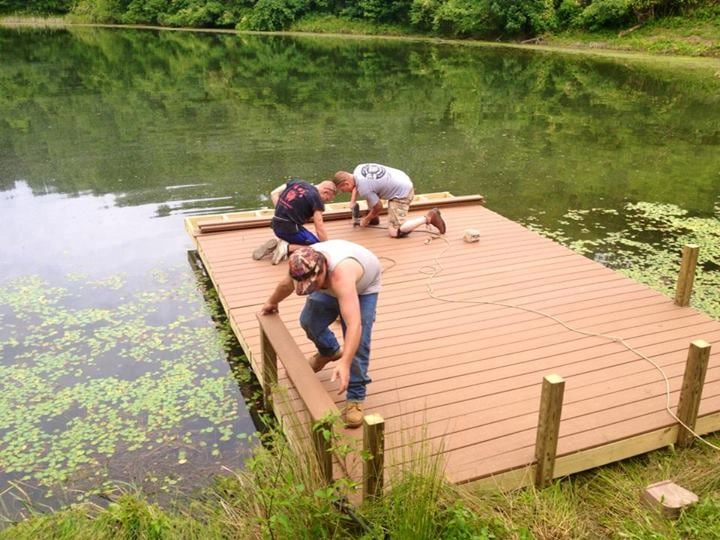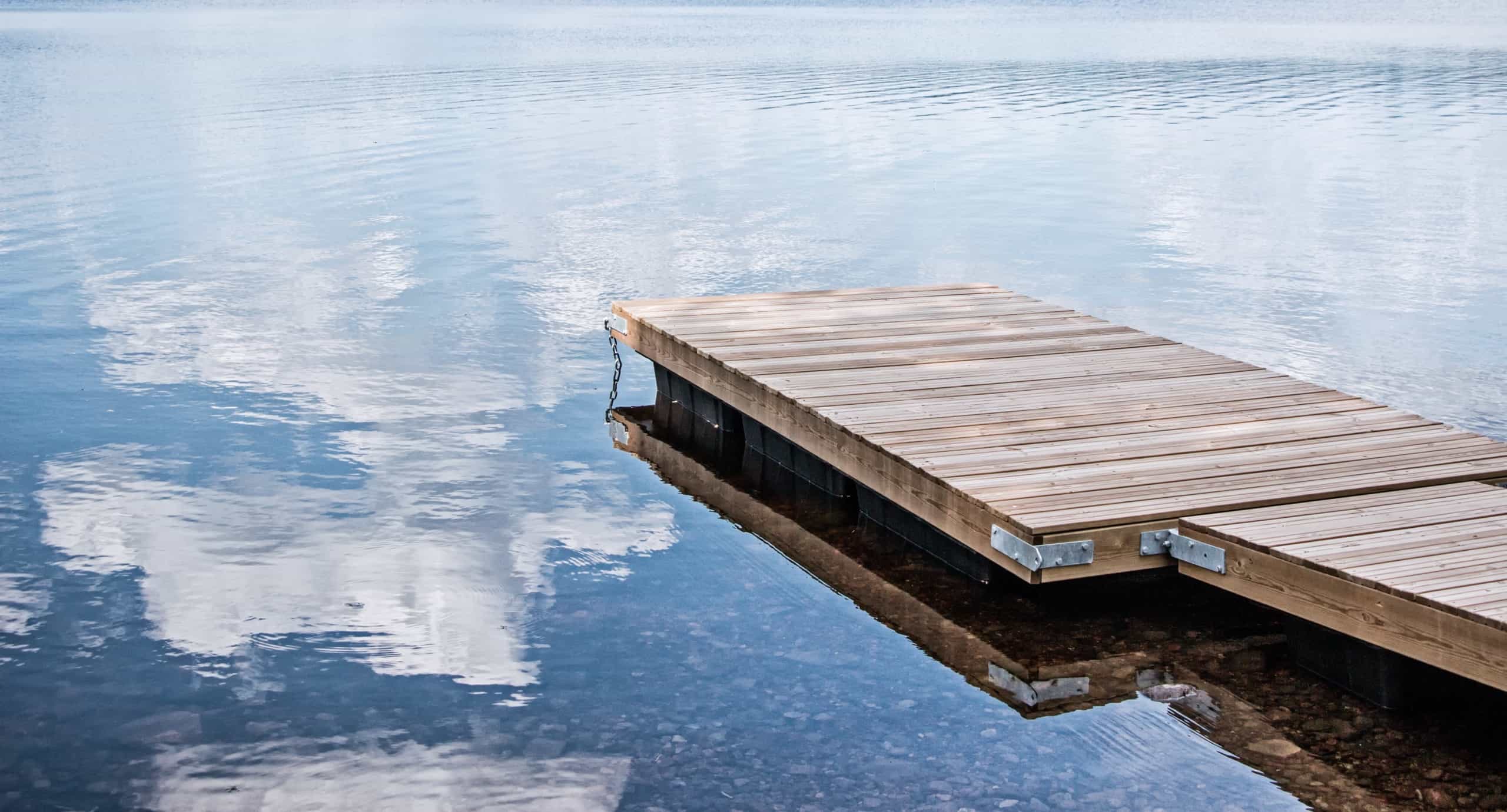Maximizing Your Outdoor Room with Specialized Floating Dock Solutions
Maximizing Your Outdoor Room with Specialized Floating Dock Solutions
Blog Article
Develop the Perfect Docking Service With Floating Docks
Floating docks existing a functional remedy for a range of maritime needs, adapting effortlessly to changing water degrees and varied vessel kinds. As we discover the crucial elements that contribute to the performance of floating docks, a number of key variables relating to stability and upkeep will arise, raising inquiries about just how to enhance your docking experience.

Advantages of Floating Docks
Floating docks offer numerous advantages that make them an optimal option for different maritime applications. Among the key advantages is their versatility to altering water levels. Unlike repaired docks, floating docks surge and loss with the trend, making certain regular access for vessels. This attribute is specifically vital in locations susceptible to considerable tidal changes or seasonal water level changes.
Additionally, floating docks are generally simpler and quicker to install contrasted to conventional fixed frameworks. Their modular style permits straightforward setting up and disassembly, assisting in maintenance and moving when required. This flexibility is specifically useful for temporary applications or in settings where conditions might alter.
Floating docks additionally have a tendency to be more eco-friendly, as they decrease interruption to the seabed and bordering water ecosystems. Their resilient nature decreases the threat of damage to aquatic life, advertising a healthier setting. These docks can be personalized to accommodate different vessel dimensions, guaranteeing that they fulfill details operational needs.
Ultimately, the mix of adaptability, simplicity of installment, and ecological considerations makes floating docks a very effective service for a large range of maritime demands.
Picking the Right Products
Selecting the proper products for floating docks is crucial to make sure resilience, security, and durability. The selection of products straight impacts the dock's performance in various environmental problems, consisting of direct exposure to water, sunshine, and possible wear from marine website traffic.
Typical materials used for floating docks include aluminum, wood, and high-density polyethylene (HDPE) Aluminum is lightweight, corrosion-resistant, and requires minimal upkeep, making it an excellent choice for long life. Nevertheless, its initial cost can be higher contrasted to various other products.
Wood, while aesthetically appealing and offering a standard appearance, can be prone to rot and bug damage otherwise correctly treated. As a result, making use of pressure-treated wood or naturally long lasting species like cedar or redwood can alleviate these problems.
HDPE is a preferred choice as a result of its resistance to UV rays and chemicals, together with being eco-friendly. floating dock builder. It is offered and light-weight in different colors, enabling modification
Eventually, the best material choice will depend on certain needs, consisting of budget plan, wanted aesthetic appeals, and ecological factors to consider. Careful examination of these variables will bring about a resilient and effective floating dock option.
Design Considerations for Stability
When designing floating docks, making certain stability is an essential element that can significantly impact their capability and safety. Stability in floating dock style is affected by numerous factors, including buoyancy, weight distribution, and the setup of parts. An optimal buoyancy system ought to utilize materials that supply enough lift while lessening weight. look at here This balance guarantees that the dock stays above water, also under differing tons.
Weight distribution is essential; evenly dispersing tons across the dock prevents turning and improves stability. Bigger styles can provide increased security, particularly in harsh water problems, while longer docks might require added assistances to avoid sagging.
An additional key factor to consider is the environmental influence, including wave activity and wind. Integrating features such as sidewalls or skirting can assist mitigate the results of environmental pressures, maintaining security in unfavorable problems. Ultimately, a mix of thoughtful design, product selection, and understanding of ecological factors will certainly yield a drifting dock that fulfills both stability and safety and security demands.
Installment Tips and Techniques

Following, safeguard the essential authorizations and abide by local regulations, which may dictate installation methods and environmental factors to consider. If called for, engage a qualified contractor experienced in floating dock installments. Use premium products created for marine environments to boost longevity and long life.
When positioning the dock, align it identical to the coastline to help with easy access. Ensure that the anchoring system is durable, utilizing concrete blocks or helical supports to support the dock against wind and wave activity. It's vital to represent seasonal water degree changes, including possible ice motion in cooler climates.
During the setup, confirm the dock's floatation and stability prior to finalizing the anchoring. Routinely evaluate the setup for any kind of indicators of wear or damage. By following these tips and strategies, you can achieve a protected, useful, and visually pleasing floating dock setup that fulfills your needs.
Maintenance and Treatment Standards
Maintaining and caring for floating docks is important to lengthening their life expectancy and making certain safe usage. Routine assessments need to be conducted to identify any type of indicators of wear, best site damages, or aquatic development. Seek cracks, loose fittings, or discolored areas on the dock's surface, as these issues can compromise structural integrity.
Cleaning is vital. Utilize a stress washer to eliminate algae, barnacles, and particles, which can collect with time. For persistent development, think about ecologically pleasant cleaning agents that won't harm marine life.
In addition, examine the mooring lines and supports often to ensure they are protected and totally free from corrosion. Replace any kind of torn or damaged lines quickly to maintain security.
Throughout extreme weather, such as tornados or freezing problems, take precautionary measures. Safeguard the dock with added mooring lines and, if practical, remove any removable elements to avoid damage.
Verdict
To conclude, the application of floating docks presents a functional and efficient docking remedy click here for more suitable for numerous maritime applications. Their adaptability to changing water levels, combined with a modular style, allows for very easy customization and moving. Choosing appropriate products enhances both resilience and aesthetic charm, while mindful consideration of security makes sure safety and durability. With proper setup and regular maintenance, floating docks can give trustworthy and effective docking experiences for a wide variety of vessels.
As we check out the necessary elements that contribute to the efficiency of floating docks, numerous key elements relating to security and upkeep will emerge, increasing concerns concerning just how to optimize your docking experience. Unlike repaired docks, floating docks surge and autumn with the tide, ensuring consistent ease of access for vessels.When developing floating docks, making certain security is a basic aspect that can considerably impact their performance and security. Security in floating dock layout is affected by numerous variables, consisting of buoyancy, weight circulation, and the plan of elements. Eventually, a combination of thoughtful style, material selection, and understanding of environmental factors will certainly generate a drifting dock that satisfies both stability and security requirements.
Report this page